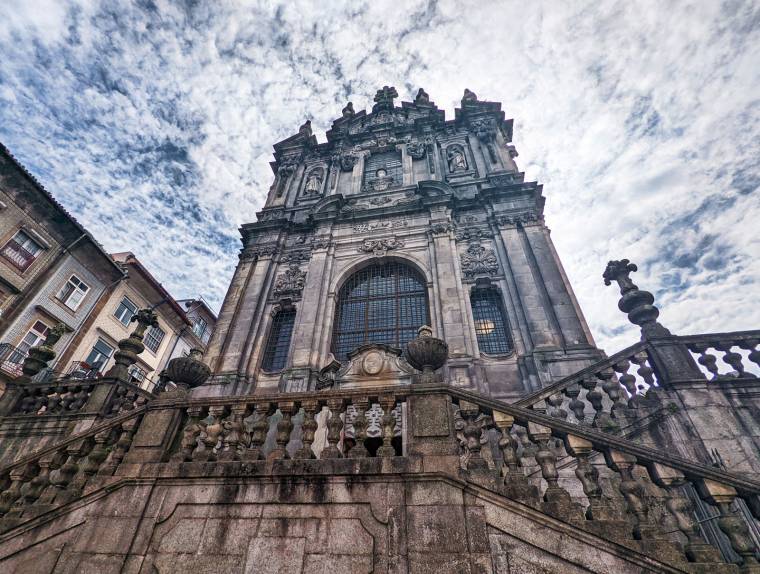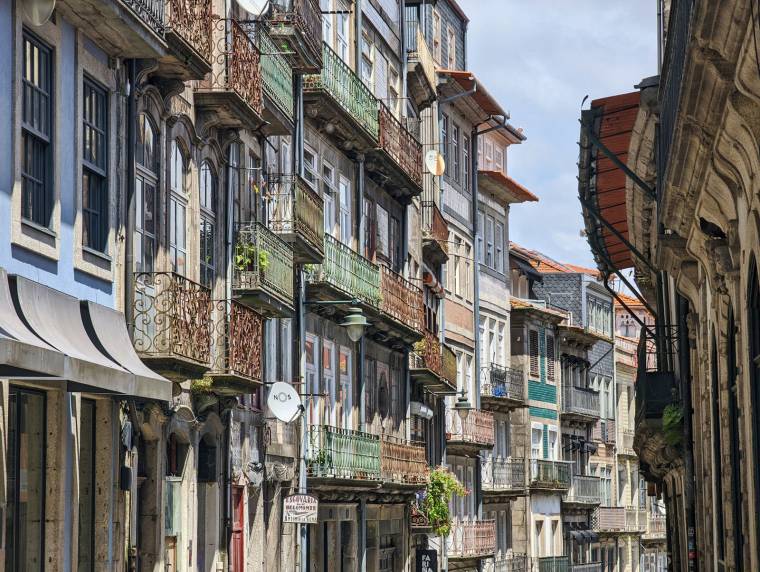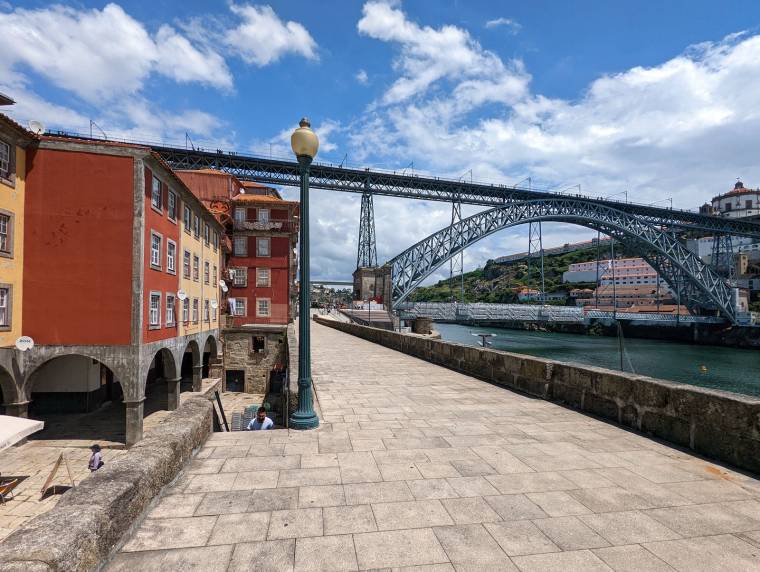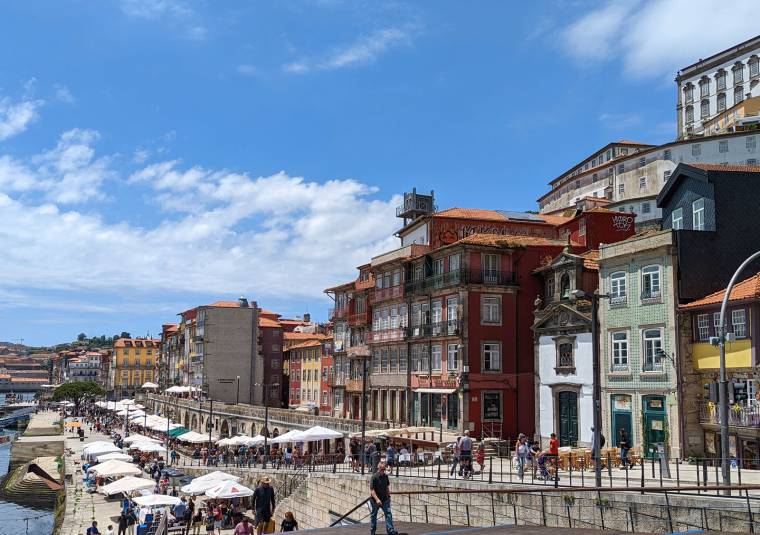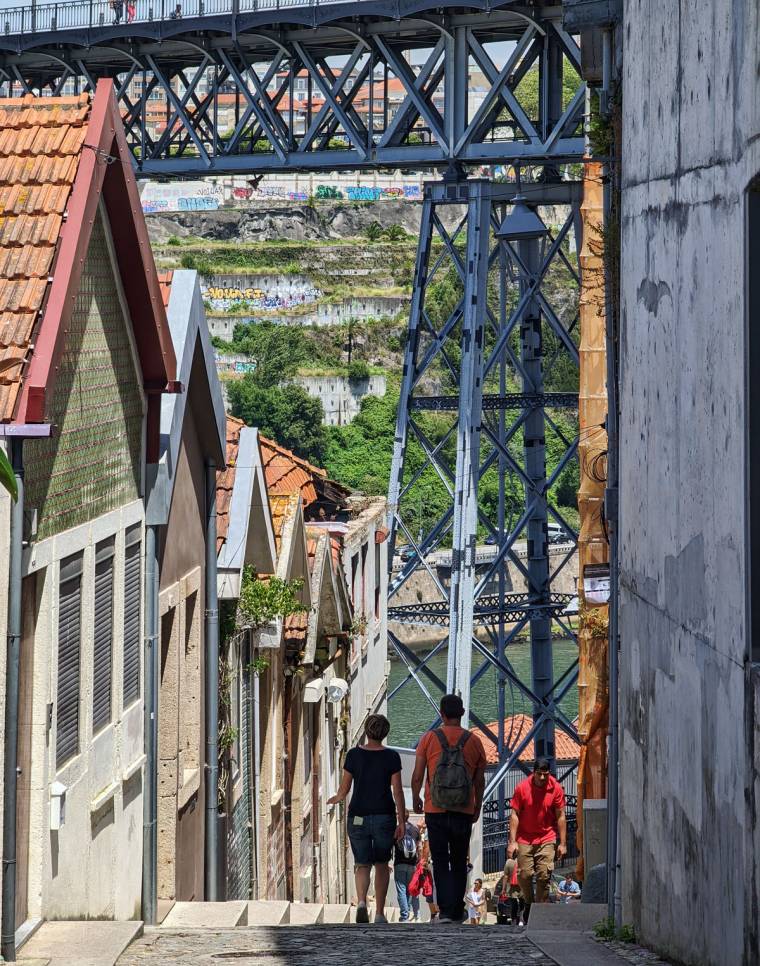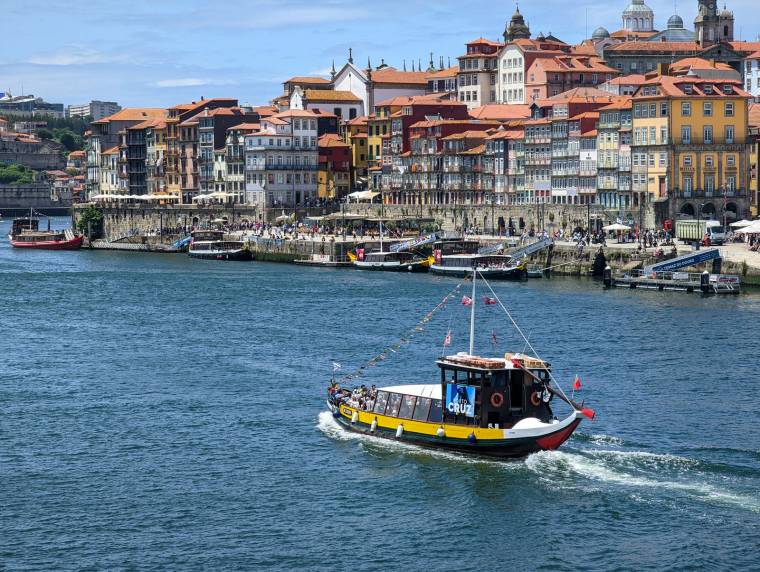The facade of the Igreja dos Clérigos in Porto. The church is best known for the Clerigos Tower - it's 75 metre tall "lighthouse of faith" / bell tower which can be seen from most points of the city.The church was designed by acclaimed Baroque architect, Nicolau Nasoni and completed in the 1760s.
Related images
An interior view of the Igreja dos Clérigos in Porto. Most people familiar with Porto will be instantly familiar with the exterior of this building as it sits at the base of the famous Clerigos tower. However, as you can see the interior of the church itself is fairly impressive too.The church itself was designed by acclaimed Baroque architect, Nicolau Nasoni and completed in the 1760s. In this view of the choir and altarpiece we can see the exquisite late Baroque gilt wood carving.
Related images
Rua de Belomonte in Porto isn't one of the main downtown streets you will read about in guide books - in fact I don't think there is a single tourist related business on the whole street, which is unusual for Porto these days. Instead it is something of an oasis of calm and a throwback to when Porto was Portugal's slightly grimy, hardest-working city. To me this is classic Porto - a little run down, but there are plenty of flourishes from the ornate tiles, cast iron balconies and ornate windows to show there certainly was (and still is) wealth here.It's well worth walking to the end of Rua de Belomonte as you will arrive in Largo São João Novo. This feels something of surprise when you are greeted with the facade of a rather large church to one side and the Palácio de São João Novo to the other.
Related images
Looking the other way along Porto's Ribeira - upstream towards the Dom Luis I bridge. This photo shows the split levels of the Ribeira with the archways and courtyards tucked away behind the main walkway.
Related images
The Cais da Ribeira or the riverside wharf as it translates has always been a bustling hive of activity. In the olden days it was where farm produce and wine from the Douro Valley would have been brought into the city. These days it is no less busy but the industry is tourism.This was fairly early in the day, but it gets a lot busier. It's an amazing spot to explore and even get something to eat, although you will pay more for the privilege than most places in Porto.
Related images
Looking across the River Douro towards Porto, and in particular the Ribeira district. This was taken from the Cais da Ribeira de Gaia just next to the Luis I bridge and captures much of what makes up Porto's UNESCO World Heritage Site status.
Related images
The steep walk down the Calcada de Serra in Vila Nova de Gaia towards the Dom Luis I bridge and River Douro. The name of this lane translates to "path of the hill" which neatly sums it up.This view illustrates what a steep valley this section of the Douro is in as it runs through the city.
Related images
A traditional rabelo river boat heads downstream past Porto's historic Ribeira district. These boats have carried goods and people up and down the River Douro for hundreds of years.These days the cargo is mostly human with tourists taking in the sights of Porto - one of the most popular trips is the "Six bridges tour". The boats are best known for carrying casks of wine destined for the port lodges of Vila Nova de Gaia. Apparently the casks were never completely filled as if they ended up in the river they would still float!
Related images
A look at the steep, terraced hillside above Porto's riverside Ribeira district. This area is at the centre of Porto's UNESCO World Heritage Site.Sitting behind the first row of houses along the riverfront is the Elevador da Ribeira or Elevador da Lada. This public elevator leads from the Ribeira to halfway up the slope of Barredo saving a considerable climb. Built in a style matching the Dom Luis I bridge, and not dissimilar to the Elevador de Santa Justa in Lisbon, this was only completed in 1994.Top of the photo, and dominating the skyline is the Paco Episcopal (Bishop's Palace) which is where the bishops of Porto once lived.
Related images
Looking through the arch of Porto's famous Dom Luis I bridge and to the Episcopal Palace beyond. The double decked metal bridge has a lower level for cars and upper level for trains and spans 172 metres across the River Douro. Completed in 1886 it forms the backdrop to Porto's Ribeira district.The Paço Episcopal (Bishop's Palace) is the former residence of the bishops of Porto. Positioned just in front of the cathedral it dominates the UNESCO World Heritage Site skyline.
